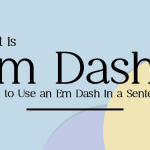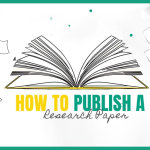There is a revered character known as the Oxford comma in the world of punctuation, where commas reign as the great orchestrators of clarity. This comma enters a language’s stage like a seasoned conductor, carefully placing itself in front of the harmonising conjunction—usually “and” or “or”—within a list of three or more items. One might be curious about the origins of the “Oxford comma,” which can be traced to the esteemed usage of Oxford University Press editors and writers.
Think of a short line that describes a tapestry of delicious fruit: “I bought apples, oranges, and bananas.” Amid this linguistic orchard, the Oxford comma may be seen, poised and intentional, nestled before the conjunction “and.” Its presence offers a tasteful pause and separates each luscious item.
The use of the Oxford comma is a tapestry woven with distinct styles, affected by the threads of many style manuals and personal preferences, as is the case with many linguistic adornments.
The Oxford comma’s supporters shout their praises, extolling its merits like ardent lyricists of grammatical clarity. They contend that when used regularly, this comma raises a flag of comprehension, fending off misunderstandings, and clarifying the genuine meaning of a statement. They think authors may build vivid pictures and ensure that the differences between items in a list shine with crystalline accuracy by embracing their existence.
However, opponents who contest the Oxford comma need to hide in the darkness generated by the device’s charm. These whispers of disapproval warn against the overuse of punctuation and probable interruption of the rhythmic flow of discourse. They argue that the Oxford comma has questionable utility since only the conjunction can denote a break between list elements.
The choice of whether to use or avoid the Oxford comma ultimately falls on style in the broad world of written communication. Consistency is required in a writer’s brushstrokes on this canvas of expression to achieve a coherent vision that maintains clarity and stays clear of the perplexing maze of ambiguity.
Therefore, let your style direct your quill, dear wordsmith, whether you want to embrace the Oxford comma or let it rest in the annals of linguistic history. May your writing flow gracefully, building a web of significance that reverberates with precision, grace, and the symphony of your voice.
Here are some examples to help you understand better:
- Ambiguity in lists:
Consider the sentence: “I invited my grandparents, Priya and Rajesh.”
Without the Oxford comma: It could be interpreted as “I invited my grandparents, who are named Priya and Rajesh.” In this case, “Priya and Rajesh” would refer to the grandparents.
With the Oxford comma: It would be interpreted as “I invited my grandparents, Priya, and Rajesh.” Here, “Priya” and “Rajesh” would be separate individuals, not the grandparents themselves. - Ambiguity with compound elements:
Let’s consider another example: “I saw a painting of my friends, Justin Bieber and Selena Gomez.”
Without the Oxford comma: It could be interpreted as “I saw a painting of my friends, who are Justin Bieber and Selena Gomez.” In this case, ” Justin Bieber” and “Selena Gomez” would refer to the grandparents.
With the Oxford comma: It would be interpreted as “I saw a painting of my friends, Justin Bieber, and Selena Gomez.” Here, “Justin Bieber” and “Selena Gomez” would be separate from the grandparents, possibly appearing in the painting or another context. - The clarity in complex sentences:
Consider this example: “We found a box of old photos, letters from the 1940s, and books on history.”
Without the Oxford comma: It could be interpreted as “We found a box of old photos that are letters from the 1940s and books on history.” In this case, the intended meaning might be unclear or confusing.
With the Oxford comma: It would be interpreted as “We found a box of old photos, letters from the 1940s, and books on history.” Here, each item in the list is distinct and avoids confusion.
These examples demonstrate how the use of the Oxford comma can prevent ambiguity and ensure clarity in sentences involving lists or compound elements. However, it’s important to note that style guides may vary in their recommendations, so it’s advisable to consult the specific guidelines you are following or the preferred style guide for the context in which you are writing.
What distinguishes an Oxford comma from a standard comma?
The comma that comes before the conjunction in a list of three or more items is known as an “Oxford comma” particularly. The Oxford comma and normal commas both have the function of dividing clauses inside sentences, thus in that respect, they are similar to each other. However, their unique uses and circumstances are what set them apart.
Only in lists of three or more items does the Oxford comma indicate a distinct break before the conjunction (“and” or “or”). Its goal is to make the statement clear and prevent ambiguity in its meaning. As an illustration, say, “I bought apples, oranges, and bananas.”
A normal comma, usually referred to as a standard comma, is a more comprehensive phrase that refers to commas in general. Regular commas have several applications outside of lists. They can denote breaks in a phrase, divide clauses, highlight introductory or superfluous material, and carry out other grammatical tasks. Using the example above, “She waved goodbye, turned around, and walked away.”
Therefore, a standard comma includes all commas used for varied purposes in various sentence structures and circumstances, but the Oxford comma is a special instance of a comma used in lists.
How to use the Oxford comma properly?
In order to properly use the Oxford comma, you must take context, style manual recommendations, and the amount of clarity you want in your writing into account. The following rules will assist you in safely and appropriately using the Oxford comma:
- Choose your desired style or style guide: varied style guides offer varied suggestions for using the Oxford comma. Choose the appropriate style or style manual for the particular writing situation you are in. The Chicago Manual of Style (CMS), Associated Press (AP), and Modern Language Association (MLA) style manuals are examples of common style manuals.
- Be consistent: Whether you decide to use or omit the Oxford comma in your writing, do so consistently. Consistency gives a uniform look and helps prevent misunderstanding.
- Consider clarity and potential ambiguity: Evaluate the sentence to determine if the use of the Oxford comma enhances clarity and reduces ambiguity. The Oxford comma can be particularly helpful when the items in the list contain conjunctions themselves or when the items are lengthy or complex.
- Read the sentence aloud: Read the sentence aloud to check if the use of the Oxford comma helps convey the intended meaning effectively. It can assist in identifying any potential ambiguity or awkwardness in the sentence.
- Follow style guide recommendations: If you’re following a specific style guide, adhere to its recommendations regarding the use of the Oxford comma. For example, the CMS generally recommends using the Oxford comma, while the AP style guide often advises against it.
- Ask for input or speak with editors: If you are confused about how to properly use the Oxford comma, you may want to ask trustworthy peers for their opinion or speak with experienced editors. They can offer advice based on the particular writing situation you’re in.
By taking into account these suggestions, you may effectively employ the Oxford comma in your writing while adhering to style manual preferences, enhancing clarity, and conveying your intended meaning.
The guidelines for using an Oxford comma:
There are a few general rules to keep in mind even if the Oxford comma’s style and usage might vary. The following are some basic guidelines for using the Oxford comma:
- Three or more item lists: In a list of three or more items, the Oxford comma is normally placed before the conjunction (“and” or “or”). As an illustration, say, “I have red, blue, and green pens.”
- Maintaining consistency across the course of a document or within a certain context is crucial. If you decide to utilise the Oxford comma, make sure to do so consistently throughout the rest of the paragraph.
- A list’s division between items can be made clearer and ambiguity can be avoided by using an Oxford comma. When the list’s contents are extensive or complex, or when they contain conjunctions themselves, it can be especially helpful. As an illustration, “She spoke to her parents, the president, and the mayor.”
- Coordinating adjectives: The Oxford comma is often not required when more than one adjective is used to describe a noun. As an illustration, use “she wore a long, flowing gown” without the Oxford comma.
- Style Manuals: Various style manuals may contain particular guidelines for using the Oxford comma. For instance, the Chicago Manual of Style (CMS) prefers to advise using the Oxford comma but the Associated Press (AP) style guide often does not.
Keep in mind that these standards are not inflexible and that they may be deviated from by personal style preferences or certain style manuals. In your particular writing setting, it’s crucial to refer to the appropriate style manual or follow the approved style.
















